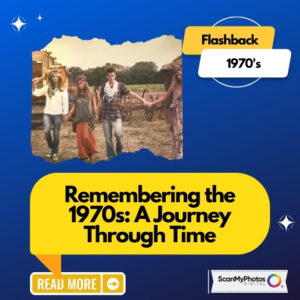New technologies can preserve photos and images from the past
Excerpt from Cape Cod Times, November 02, 2008, By HEATHER WYSOCKI
Anyone in possession of photographs of Baby’s first birthday in 1981, the family eeunion of 1968 or a favorite day at the beach circa 1925 knows that family snapshots are worth much more than a thousand words. Chances are, though, that despite how beloved they are, the shots are stored in musty cardboard boxes waiting to be archived ” sometime. The problem with old-fashioned methods of organization, says John Adams, owner of Cape-based Orleans Camera, is that traditional printed photos — along with home-movie footage and Polaroid shots — often don’t stick around as long as the memories.
“A lot of those things lose quality over the years,” he says. While some types of photo paper can last hundreds of years, others, including Polaroids, have a decidedly shorter shelf life — and all are simply paper, so can easily be damaged if not stored properly.
The best way to prevent the loss of those photos, and memories, is to digitally archive photos, says Adams. When a tragedy, such as a death in the family, hits, “old pictures suddenly become very important,” he says. Backing memories up digitally “gives them a good chance to survive (for) future generations.”
These higher-tech ways of storing and sharing photos and video can ensure that future generations can experience the family memories as easily as their great-grandparents did.
Go digital: Digital cameras have come a long way from the bulky models of 10 years ago. For future photos, pick up a point-and-shoot that works much like a 35mm camera, as well as a memory card, then download your shots to a computer’s hard drive.
Lose or damage the camera? The snaps are safe and sound on the computer. Amy Rader, a portrait photographer in Falmouth, goes one step further and backs her clients’ photographs up on a separate external hard drive as well as on her computer. Experts recommend that you do, too — and Adams suggests storing the extra hard drive in a different location so, in case of a fire or other disaster, photos are preserved.
Digitizing can also work for photos from the past. Orleans Camera is one company that will take old paper photos and reproduce them onto a CD or DVD — for preservation or so that photos can be copied or e-mailed to friends and family. Cost for what Adams refers to as the “shoebox” service is changing as the technology does, but he gives a range of $29 to $39 for 100 to 200 images.
Online photo sharing: Web sites like Kodak Gallery (www.kodakgallery.com), Shutterfly and Photobucket (www.photobucket.com) allow users to store an unlimited number of digital photos, plus share them by e-mail with friends and family. For an additional charge, Shutterfly also grants access to a simple photo-editing program (so you can finally fix that cowlick that ruined Junior’s 1982 kindergarten photo).
Don’t want to pay to edit photos? Photobucket has a very basic — but free — program that allows for resizing, cropping and sharpening; www.picnik.com is a free editing site with even more features, including adding text and fixing brightness and contrast. Picnik even lets users upload photos directly from sites such as MySpace, Facebook and Photobucket, so there’s no need to download the images twice.



